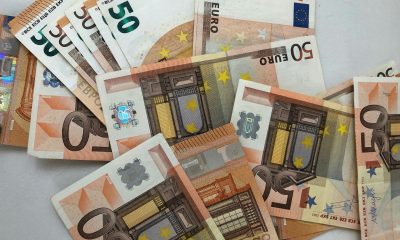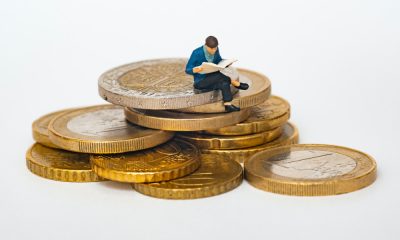Featured
How impact investing could help countries recover from natural disasters
Natural disasters destroy numerous properties each year. To protect communities from the consequences, many impact investors put their money into the restoration of local buildings. Impact investors play a significant role in facilitating recovery efforts. By putting money into the area, they provide residents with resources for repairing their communities.

People often believe that natural disasters won’t happen to them, but life has many surprises. A hurricane, tornado or flood can quickly turn one’s life and home upside down. It’s not always possible for residents to prepare for these occurrences, which makes rebuilding a challenge. However, people don’t have to be left out in the cold. External forces have the power to protect against the worst of the destruction.
Impact investors play a significant role in facilitating recovery efforts. By putting money into the area, they provide residents with resources for repairing their communities. Disaster preparedness can mean the difference between life or death, and impact investing matters.
Natural Disaster Destruction
Natural disasters destroy numerous properties each year. Ten major weather events have occurred in 2019, with each of them exceeding $1 billion in losses. One of the most recent was Tropical Storm Imelda, which caused significant home, business and vehicle damage throughout Southeast Texas. These events come and go in the minds of those unaffected, but residents deal with the fallout for months and years afterward.
The real estate market takes a hit, too. The effect isn’t as pronounced in disaster areas, where people already expect and prepare for incidents. However, areas that don’t encounter much destruction often experience a significant drop in property values. Potential residents avoid the location because it no longer seems safe to them. Homes on the market have a harder time selling, and agents have to convince people to buy.
The lost revenue from decreased tourism can also put a dent in a city’s reconstruction plans. That’s why cities benefit from having investors who will kickstart repairs after the dust settles.
What Is Impact Investing?
Impact investing describes a method of philanthropy that facilitates social improvement in addition to financial gains. Businesses and individuals invest in organizations that benefit the community — such as a sustainable nonprofit. With natural disaster protection, investors put their money into buildings within a district, making it easier for locals to rebuild. Money and resources often prevent towns from bouncing back, but investors provide both of these assets.
Building information modeling can help with reconstructing destroyed buildings. Digital renderings let business partners collaborate on designs and view construction through a comprehensive lens. Building a home, mall or grocery store consists of numerous moving parts — everyone involved needs to stay on the same page for the project to succeed.
The 2015 earthquake in Christchurch, New Zealand, is an example of impact investing in action. Contractors restructured the ruined buildings by using virtual forms, which they adjusted for improved durability and strength. Investors can use this technology and much more to help rebuild communities.
New Orleans helped its residents rebuild with dry creeks and enhanced infrastructure, while San Rafael, CA, has proposed levees and elevated structures to protect rising sea levels.
Recovery After the Storm
Returning to normalcy is easier to do when external motivators support the effort. Mission Investors Exchange connects organizations to cities struggling with natural disasters, lack of resources and more. Foundations such as Habitat for Humanity go into the field and participate in rebuilding old structures and creating new ones.
Impact investing focuses on the long-term ramifications of hurricanes, floods and more. Many cities receive immediate help but fall to the wayside after government officials deal with the surface-level issues. Investing for the long haul gives communities greater hope of restoring themselves and establishing better preventive measures.
If residents are still unsure of how to protect themselves after wildfires sweep through, they’ll be in the same position if it happens again. Helping cities means more than fixing the physical structures. It also includes offering risk reduction strategies and sharing expertise on better homebuilding.
Impact Investing Rebuilds Communities
Kind hearts and monetary resources help communities regrow after destruction. No one’s neighborhood should have to succumb to floodwaters or hurricanes. Investing in a city’s future can save it from years of delayed repairs and construction projects. Residents will look forward to improved infrastructure that will guard them against the next weather event.
(Featured image by Denniz Futalan via Pexels)
DISCLAIMER: This article was written by a third party contributor and does not reflect the opinion of Born2Invest, its management, staff or its associates. Please review our disclaimer for more information.
This article may include forward-looking statements. These forward-looking statements generally are identified by the words “believe,” “project,” “estimate,” “become,” “plan,” “will,” and similar expressions. These forward-looking statements involve known and unknown risks as well as uncertainties, including those discussed in the following cautionary statements and elsewhere in this article and on this site. Although the Company may believe that its expectations are based on reasonable assumptions, the actual results that the Company may achieve may differ materially from any forward-looking statements, which reflect the opinions of the management of the Company only as of the date hereof. Additionally, please make sure to read these important disclosures.

-

 Crypto5 days ago
Crypto5 days agoCrypto Markets Slide as Bitcoin Breaks $90K, Year-End Pessimism Grows
-

 Crypto2 weeks ago
Crypto2 weeks agoEuropean Selling Drives Bitcoin’s November Slump
-

 Impact Investing2 days ago
Impact Investing2 days agoTreeblock Showcases Sustainability Solutions at ADIPEC Abu Dhabi
-

 Cannabis1 week ago
Cannabis1 week agoRemexian Wins Legal Battles Amid German Cannabis Licensing Dispute
























